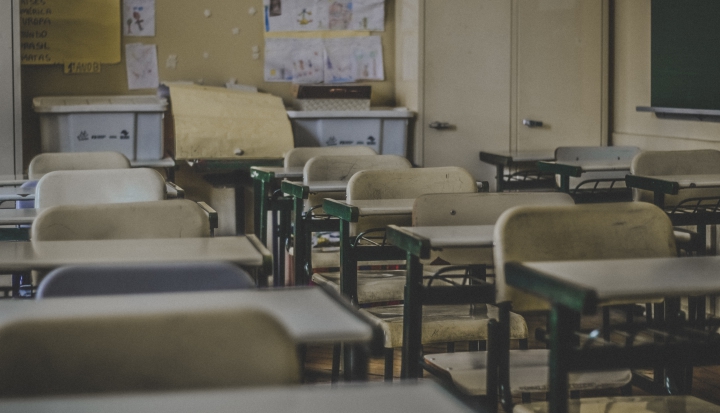A couple of years ago, I taught Dave Cullen’s book Columbine (Twelve) to college freshmen, most of whom weren’t even born when Dylan Klebold and Eric Harris gunned down 13 of their fellow high school students on April 20, 1999. My students were largely ignorant of the shooting with little understanding of how profoundly that day shaped their high school experience. They were surprised to learn that only 1 in 5 high schools had security cameras before 1999. Today, 3 in 5 do. Before 1999, high schools did not have metal detectors, I told them, no bag bans, and definitely no active shooter drills. Before Columbine in 1999, which until a few weeks ago was the deadliest high school shooting in U.S. history, most students only had to worry about grades, clothes, and the opposite sex.
But then Columbine happened and schools were locked down. Metal detectors were installed. Bag bans were enforced. Attempts were made to safeguard against another school shooting, but the mass shootings continued: Red Lake, Virginia Tech, Sandy Hook, Umpqua College. A few weeks ago, Nikolas Cruz opened fire on his former classmates at Marjory Stoneman Douglas High School and outdid Eric and Dylan in killing 17 of his classmates with an AR-15-style rifle.
When Columbine happened, we were shocked. On February 14, we were shocked it’s still happening.
Like most of you, I am bereft, scared, and angry. But my overwhelming feeling is a fear so profound it’s difficult to breathe. Thinking back to reading Columbine with my students, what interested them most was the why of it, that searing hot poker of a question all of us are left holding. Why and how do we stop it from happening again?
In A Mother’s Reckoning: Living in the Aftermath of Tragedy (Broadway Books), Sue Klebold, the mother of Columbine shooter Dylan Klebold, wrestles with this. How did her son become a killer? What clues did she miss? What could she have done differently? Her book points to Dylan’s depression, a fact that certainly contributed to the murders on April 20, 1999. But mental health cannot bear the entirety of the Columbine massacre, as millions of people have suffered through depression without killing others.
After the Parkland, Florida shooting, I have my own mother’s reckoning. My son came home last week reporting he’d been told to throw his hard reader at a gun-carrying intruder if one enters his classroom. He’s in third grade. My 8-year-old son is supposed to defend himself against a gunman by throwing a hardcover book.
I know my son’s school needs to address the possibility of a shooting. I don’t take issue with that. What I take issue with is the lack of acknowledgment that these measures are not working. The post-Columbine safety precautions and drills have not stopped the mass shootings. Pointing the finger at mental health issues has not stopped the mass shootings. Thoughts and prayers have not stopped the mass shootings.
Not only are they are not working, all of these provide cover for the actual problem, which is America’s devastating and cruel obsession with guns. What will stop mass shootings in America? Less accessibility to guns. I don’t care how much America loves guns. I love my kids more.
I could insert compelling facts here that would illustrate America’s dangerous obsession with guns. I could post a link to the videos of Parkland, Florida students begging adults to enact common sense laws that would have prevented the murders those students bore witness to. I could point to all the comparison-by-country charts that are popping up everywhere that point to the culpability of guns in mass shootings.
But I won’t. Instead, here’s a list of the Columbine high school students and teacher shot and killed at Columbine, students who weren’t concerned about gunmen chasing them under desks or throwing pipe bombs down hallways; students who went to school thinking about math tests, football games, and school dances; students who never got to come home because two mentally unstable classmates had access to guns: Rachel Scott, Daniel Rohrbough, Kyle Velasquez, Steven Curnow, Cassie Bernall, Isaiah Shoels, Matthew Kechter, Lauren Townsend, John Tomlin, Kelly Fleming, Daniel Mauser, Corey DePooter, and Dave Sanders.
And here is the list of the students and teachers shot to death at Marjory Stoneman Douglas high school, students who hoped for Valentine notes left on lockers; students who underwent active shooter training drills that didn’t save them; students who will never go off to college because a classmate with a known history of mental illness had an assault rifle: Alyssa Alhadeff, Scott Beigel, Martin Duque, Nicholas Dworet, Aaron Feis, Jaime Guttenberg, Chris Hixon, Luke Hoyer, Cara Loughran, Gina Montalto, Joaquin Oliver, Alaina Petty, Meadow Pollack, Helena Ramsay, Alex Schachter, Carmen Schentrup, and Peter Wang.
It’s been 19 years since Columbine happened. Let’s finally learn from it.
Molly Jo Rose’s column, In and Of the World, focuses on finding God’s goodness in the darkest places of the world.
Image: Feliphe Schiarolli on Unsplash











